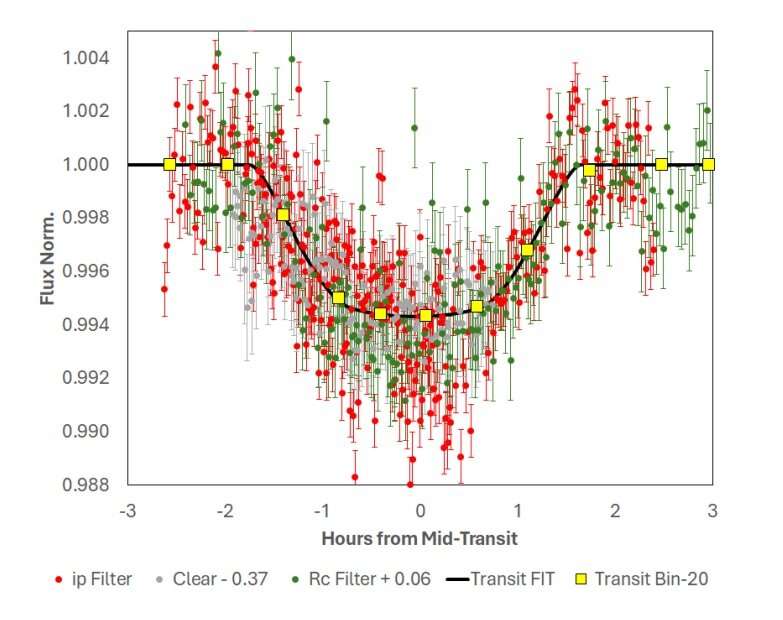Astronomers report the detection of a second exoplanet orbiting a G-type star known as TIC 393818343, located some 300 light years away. The newfound alien world is about three times less massive than Jupiter. The finding was detailed in a research paper published October 9 on the pre-print server arXiv.
TIC 393818343 is an early G-type star estimated to be 3.8 billion years old. The star is about 8% larger and more massive than the sun, has an effective temperature at a level of 5,756 K, and its metallicity is approximately 0.32 dex.
In May 2024, the first exoplanet orbiting TIC 393818343 was detected. The planet, which received designation TIC 393818343 b, orbits the host every 16.25 days on an eccentric orbit. Given that TIC 393818343 b is slightly larger and over four times more massive than Jupiter, and its equilibrium temperature is around 805 K, it was classified as a warm Jupiter.
Now, a team of astronomers led by Italian amateur astronomer Giuseppe Conzo has confirmed the presence of another planet in this system—TIC 393818343 c. The discovery is based on ground-based observations using several telescopes worldwide, including the Nastro Verde Observatory in Italy.
“The second planet was initially spotted by the Las Cumbres Observatory (LCOGT) and amateur astronomers. (…) While studying the Transit Timing Variations for the first planet, the researchers noticed discrepancies in the predicted orbital period of TIC 393818343 b. The offset in transit times was more than one hour, which led to the suspicion and confirmation of TIC 393818343 c,” the authors of the paper explained.
According to the study, TIC 393818343 c is about 30% smaller than Jupiter and its mass is estimated to be approximately 0.36 Jupiter masses, which yields a density at a level of 0.96 g/cm3. The planet has an orbital period of 7.84 days, thus it is an inner companion of TIC 393818343 b, and its equilibrium temperature is expected to be some 1,027 K.
Based on the derived parameters, the astronomers classified TIC 393818343 c as a super-Neptunian gas giant exoplanet, excluding the possibility that it may be a terrestrial world. The so-called super-Neptunes are alien worlds larger than Neptune with masses up to 0.47 Jupiter masses. The scientists added that super-Neptunian planets like TIC 393818343 are generally rarely found around solar-like stars.
In concluding remarks, the researchers noted that in order to further uncover the properties of TIC 393818343 c, an atmospheric spectroscopy of this planet should be conducted as well as radial velocity measurements to reveal its true mass.
More information:
G. Conzo et al, TIC 393818343 c: Discovery and characterization of a Neptune-like planet in the Delphinus constellation, arXiv (2024). DOI: 10.48550/arxiv.2410.07425
Journal information:
arXiv
© 2024 Science X Network
Citation:
Second exoplanet detected orbiting an early G-type star (2024, October 17)
retrieved 17 October 2024
from https://phys.org/news/2024-10-exoplanet-orbiting-early-star.html
This document is subject to copyright. Apart from any fair dealing for the purpose of private study or research, no
part may be reproduced without the written permission. The content is provided for information purposes only.

